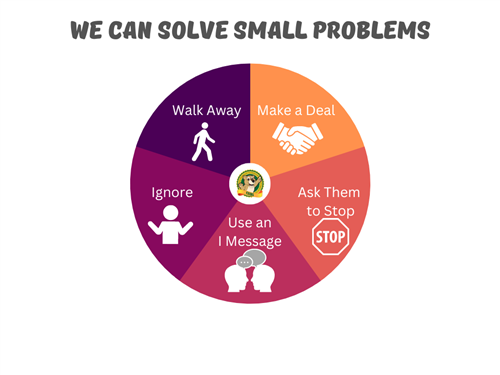Kids Can Be Mean: helping your child stand up to mean behavior and solve their own problems
Kids are constantly socially experimenting and testing boundaries with their peers — What is acceptable behavior? What do other kids respond to? What can I do to get my way? To make friends? What are other kids doing?
Sometimes, these experiments lead to some pretty mean behaviors (name calling, exclusion, yelling, pushing, etc.). Although as adults, we often want to step in and stop this behavior for our little ones, this isn’t always the best option. These situations can be a great learning opportunity for kids and can help them become confident in their own skills! Below are some tips for helping kids build the skills to deal with these behaviors in their social circles.
If your child tells you about something that happened (eg. “Today at school, Billy kept being mean to me!”), empathize first. Say things like “that sounds hard” or “I bet that made you upset.” Help them identify how they felt, and what behavior made them feel that way.
Next, help them determine the size of the problem. One way to do this is to review the difference between a big problem (something dangerous, frightening or persistent that needs to be reported to an adult) and a small problem that students are strong enough and smart enough to handle on their own. Examples of small problems include: teasing, name calling, not sharing, pushing in line, not following game rules, excluding a student from a game, etc.
If you determine it was a big problem (dangerous, frightening, illegal, etc.), praise your child for bringing it to an adult’s attention — “That does sound like a big problem because ________. I’m glad you told me about it, because big problems are ones that kids need help solving. Let’s work together to find a solution.
If you determine it was a small problem, ask your student how they handled it (or could have)– “What did you do,” “Since it was a small problem, what Kelso’s choices did you try,” or “That sounds like a problem you can handle – how did you solve it?” Reflecting on their solution is a great way to build comfort with their ability to solve their own problems.
Empower them to continue solving small problems on their own. “I’m so proud of you for coming up with a solution to your problem. I bet next time, you’ll be able to do it all on your own!”
Offer an opportunity to practice. Acting out similar scenarios at home can help build stronger connections in the brain pathways used to utilize these skills. If there was a specific situation that your child struggled to find a solution for, pretend it’s happening at home! “I’m going to be Billy. Let’s go line up at the door – I was here first!”
Create scenarios in which kids need to practice these skills. Creating small problems in the home environment can help students build skills in an authentic way (even if you are intentionally creating the problem). Maybe you decide you want to watch TV at the time the kids usually get to watch. Or maybe there are 3 of you, but only a 2 player game. — “How can we solve this problem?”
The more risks you allow your children to make, the better they learn to look after themselves.
-Roald Dahl




